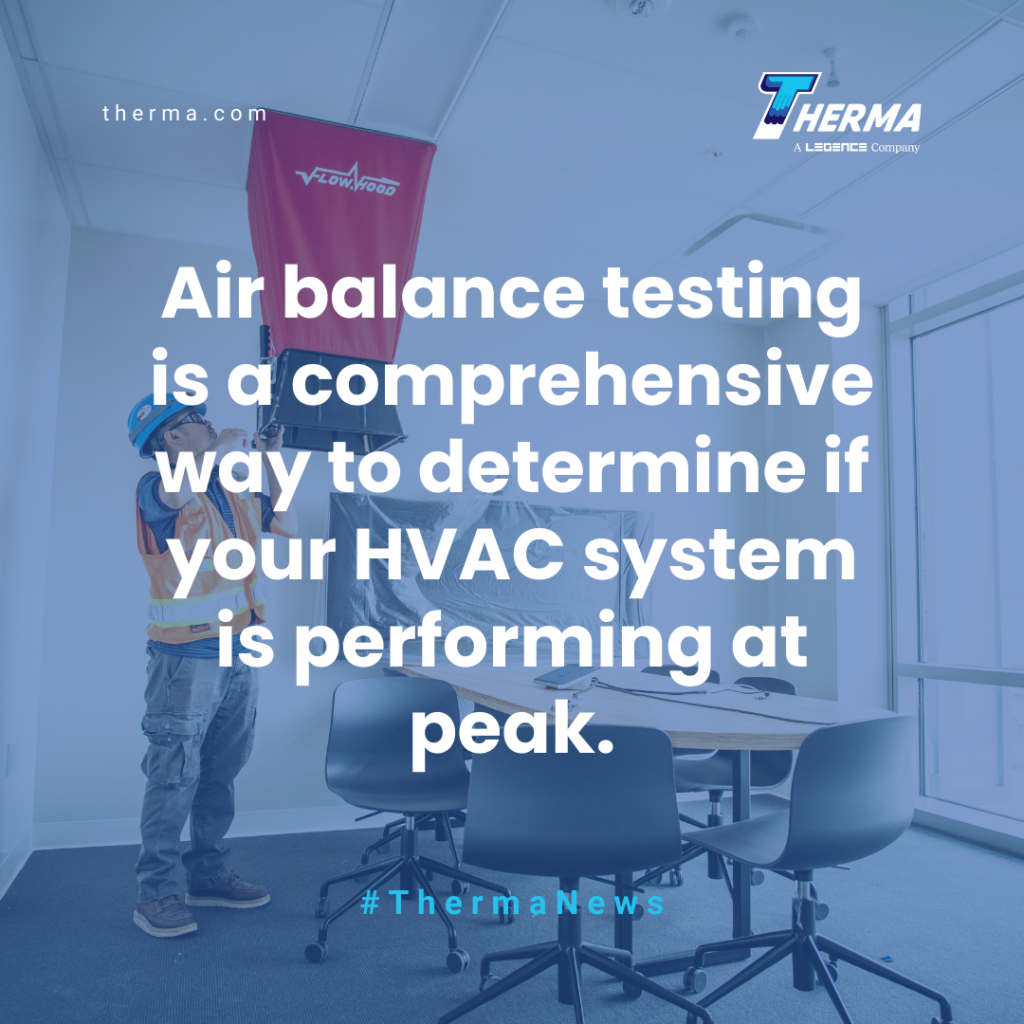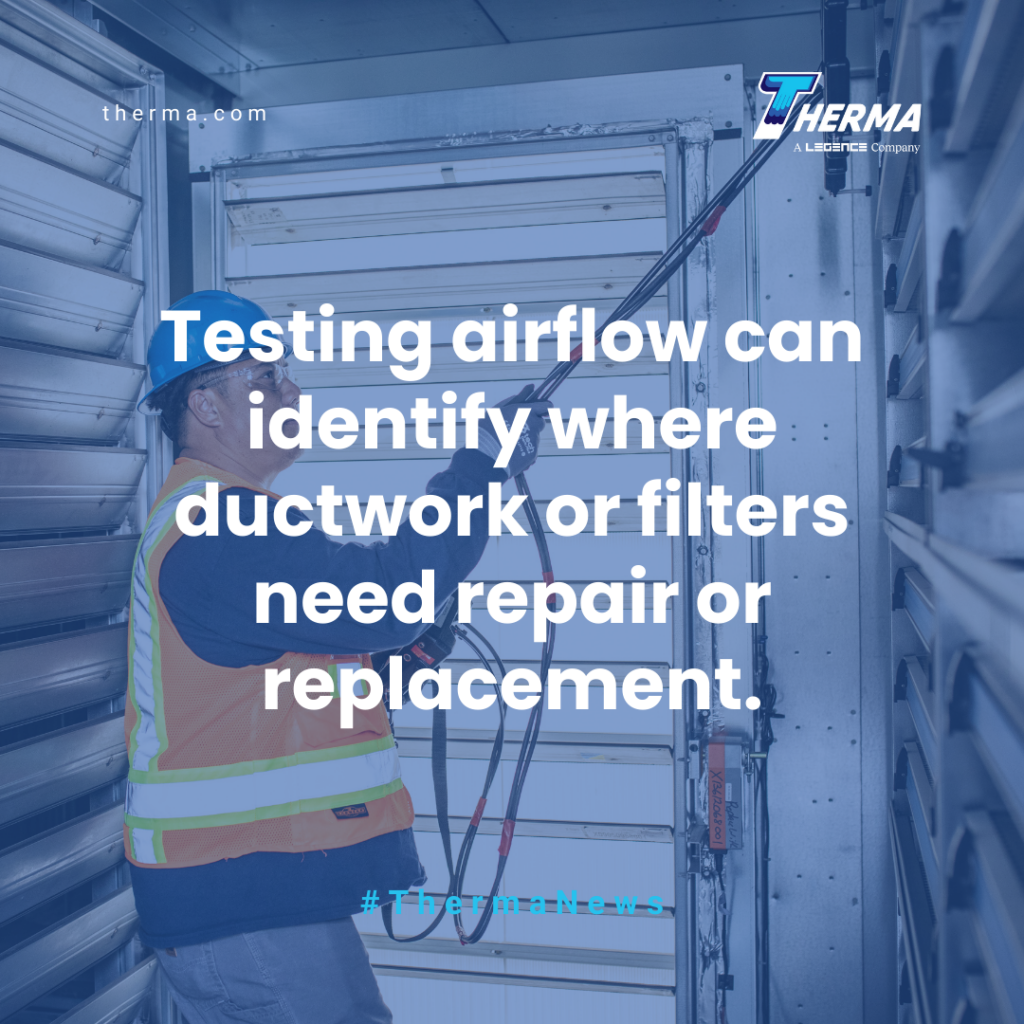by Ali Kriscenski
Air balance testing is a valuable diagnostic process that can improve HVAC system performance. This maintenance tool can help achieve energy efficiency goals and be used in strategies to create optimal indoor air quality, including thermal comfort. In this guide, we’ll explore the basics of air balance testing and how it is essential to many types of buildings and industries.
How Air Balance Testing Works
Air balance testing is a comprehensive way to determine if your HVAC system is performing at peak. This procedure surveys all of your system components including its furnace, fans, ductwork, valves, and vents. Air balance testing checks in on all of these devices and how they work together. Through testing, adjustments, and balancing, this maintenance can calibrate equipment, identify needed repairs, and create alignment between settings and performance.
Air balance testing allows you to gather system data that can help inform adjustments that improve the temperature and flow of conditioned air. Through the testing process, information on system performance can guide airflow adjustment, temperature, and humidity settings, and how they can work more efficiently together to create comfortable conditions in all occupied spaces.
Benefits of Air Balance Testing
The process of air balance testing creates opportunities to improve indoor air quality (IAQ), reduce energy costs, and expand the longevity of system devices and equipment. The process tests airflow and other system performance data that can reveal damage or defaults that could lead to larger system failures.
Testing airflow can identify where ductwork or filters need repair or replacement. This diagnostic information can identify where components need improvements in order to alleviate strain on furnaces and electrical devices. Making the repairs identified through the air balance testing process can improve thermal comfort, and energy efficiency, and create cost savings.
Importance of Air Balance Testing in Critical Environments
In certain types of facilities, HVAC system performance contributes to regulatory compliance. Facilities that contain healthcare, pharmaceutical, and manufacturing programs rely on environmental conditions that maintain temperature, humidity, and ventilation. These requirements are necessary to ensure disease, chemical, and contaminant management in accordance with industry regulations.
In healthcare facilities, air flow consistency, temperature, and humidity settings are fundamental to controlling the spread of disease. These conditions also help ensure the respiratory health of building occupants, including patients and healthcare workers. HVAC conditions in hospitals and healthcare buildings are also paramount to the proper storage of medicine, equipment, and vaccinations.
Pharmaceutical and other types of GMP manufacturing have stringent regulations related to environmental conditions. In these environments, proper testing and calibration of HVAC systems is not only crucial to operational continuity, they are also regulated by industry standards. Equipment and conditioned spaces often need to be monitored by automated sensors, and the data collected for regulatory compliance reporting.
HVAC performance is also important to the IAQ of office buildings. Thermal comfort-including temperature, humidity, and airflow-is a contributing factor to employee attendance, employee performance, and health. Research has shown that poor air quality has an adverse effect on cognitive functions and on productivity. Employees who work in environments with poor ventilation experience more chronic illnesses such as asthma.

Creating a HVAC System Performance Strategy
While air balance testing is only part of ongoing HVAC system maintenance, it is a comprehensive way to analyze system performance and identify where improvements and upgrades can have significant benefits. Getting started with a long-term performance strategy can seem daunting, but with a focused approach to diagnostic testing, you can create an effective plan for energy efficiency and optimal thermal conditions and comfort.
The HVAC experts at Therma can perform the air balance testing diagnostics you need to optimize your system’s performance. Contact our team of professionals to get started with your maintenance strategy.
AUTHOR BIO
Ali Kriscenski was trained in high-performance building design at Boston Architectural College. She has worked with leading architecture and construction firms in NYC and New England and served on the executive team at the Forest Stewardship Council International. She was the managing editor at Inhabitat and has worked pro bono for the Green Building Institute, ISEAL Alliance, and Habitat for Humanity.
Sources
American Lung Association – Indoor Air Pollution and Health
Occupational Health & Safety – Sick Building Syndrome: What is it and Tips for Prevention








